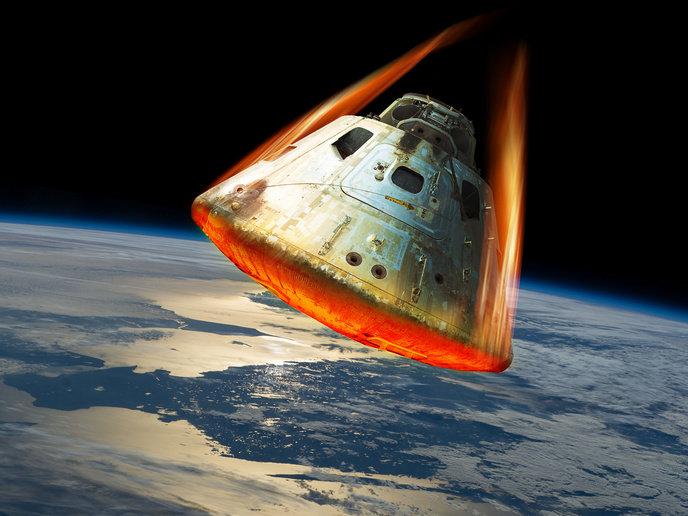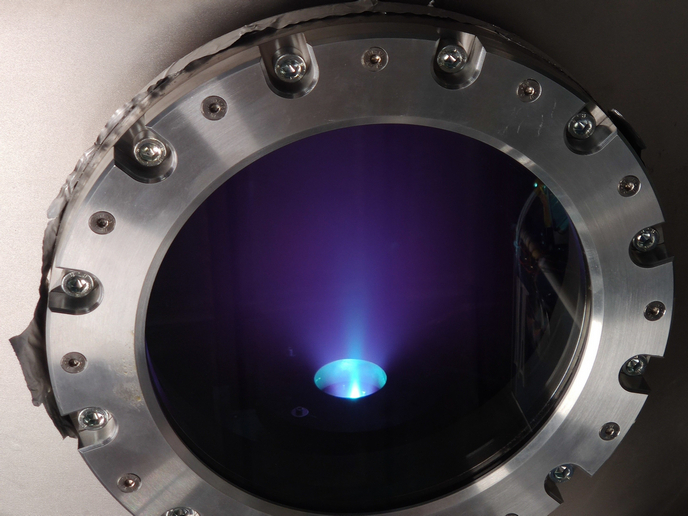A world-first magnetic shield for spacecraft (re)entry
When spacecraft enter planetary atmospheres at hypersonic speed, shock waves heat up the craft’s surface to around 1 600 °C, risking damage to the spacecraft’s structure, systems failures and even mission loss. Protective heat shields have been developed – consisting of metallic, ceramic, composite and/or ablative materials – but they increase the craft’s weight while reducing payload. They also require extensive and expensive testing, while still not considered fully reliable, requiring maintenance and often replacement after each mission. Additionally, plasma trailing behind the spacecraft can block radio waves – resulting in communication blackouts for astronauts and mission control. The EU-funded MEESST project has introduced a paradigm shift by exploring magnetic shielding. Using high-temperature superconductors (HTSs), MEESST’s device generates a magnetic field that displaces the shock wave and plasma sheath surrounding the spacecraft, mitigating surface heat fluxes and also potentially, radio communication blackouts. “Our solution is a game changer due to its reduced mass, volume, electrical power and cryogenic cooling requirements compared to traditional low-temperature superconductors, while generating higher magnetic fields than previously possible. It is also greener, as it is reusable, avoiding more space debris,” says Andrea Lani, MEESST project coordinator.
Testing for reduced MHD plasma flows and radio blackout
MEESST project partners developed and tested the magnetohydrodynamics (MHD)-enhanced demonstrator – an experimental probe resembling the blunt nose of a spacecraft with an integrated cryogenically cooled HTS magnet. This was then tested in representative re-entry conditions, with and without magnetic fields applied, to quantify mitigation effects on heat fluxes (in the PWK1 arc jet facility at the Institute of Space Systems) (website in German) and radio blackout (in the Plasmatron at the Von Karman Institute). A total of four experimental campaigns were conducted, two for each characterisation (heat fluxes and radio blackout). Regarding heat flux, strong mitigation was reported in supersonic air plasmas, up to 40 % for Moon return (60 megajoules per kilogram) and up to 80 % for interstellar return (80 megajoules per kilogram), at the maximum achievable magnetic field strength (0.67 tesla on the probe surface). Regarding radio blackouts, the results for both air (Earth) and CO2 (Mars) plasmas returned weaker attenuation effects than hoped – up to five decibels’ reduction (in signal loss), suggesting future tests with better antenna positioning, higher (supersonic) flow speed and a higher magnetic field. “Combined, these results demonstrate the real potential of this technology for a broad range of space missions involving re-entry at higher speeds and higher ionisation rates, like Moon or Mars returns or asteroid mining,” notes Lani. The advanced modelling software developed to simulate both scenarios (MHD plasma flows and radio blackout respectively) – COMET by KU Leuven and BORAT by KU Leuven and the University of Luxembourg – can now assist virtual prototyping of future magnetic entry shielding systems.
Getting the heat shield ready for market launch
The MEESST team is currently working to scale up its system to an actual flight scenario, with plans to create a start-up to commercialise the technology. Additionally, the team is seeking European Innovation Council support to prepare a demonstration of Low Earth Orbit (LEO) re-entry of the Nyx capsule by The Exploration Company. This would appeal to three main markets: LEO cargo flights (such as for manufacturing/R&D in microgravity), space exploration (e.g. Lunar and Mars return) and space/asteroid mining. “We are working to provide enabling technology for the next generation of space missions, protecting people, equipment, materials and supplies as they travel through outer space and back,” adds Lani.
Keywords
MEESST, Mars, Earth, Moon, atmosphere, heat shield, magnetic, plasma, space, re-entry, spacecraft, low earth orbit







